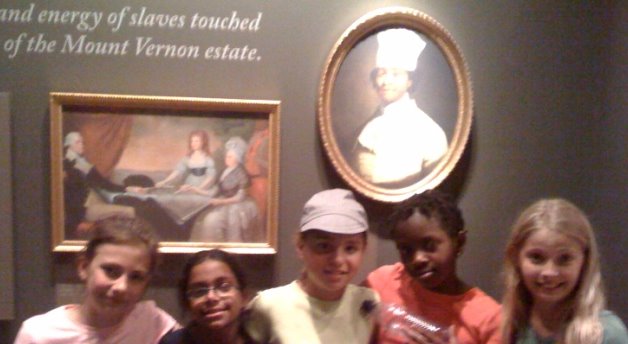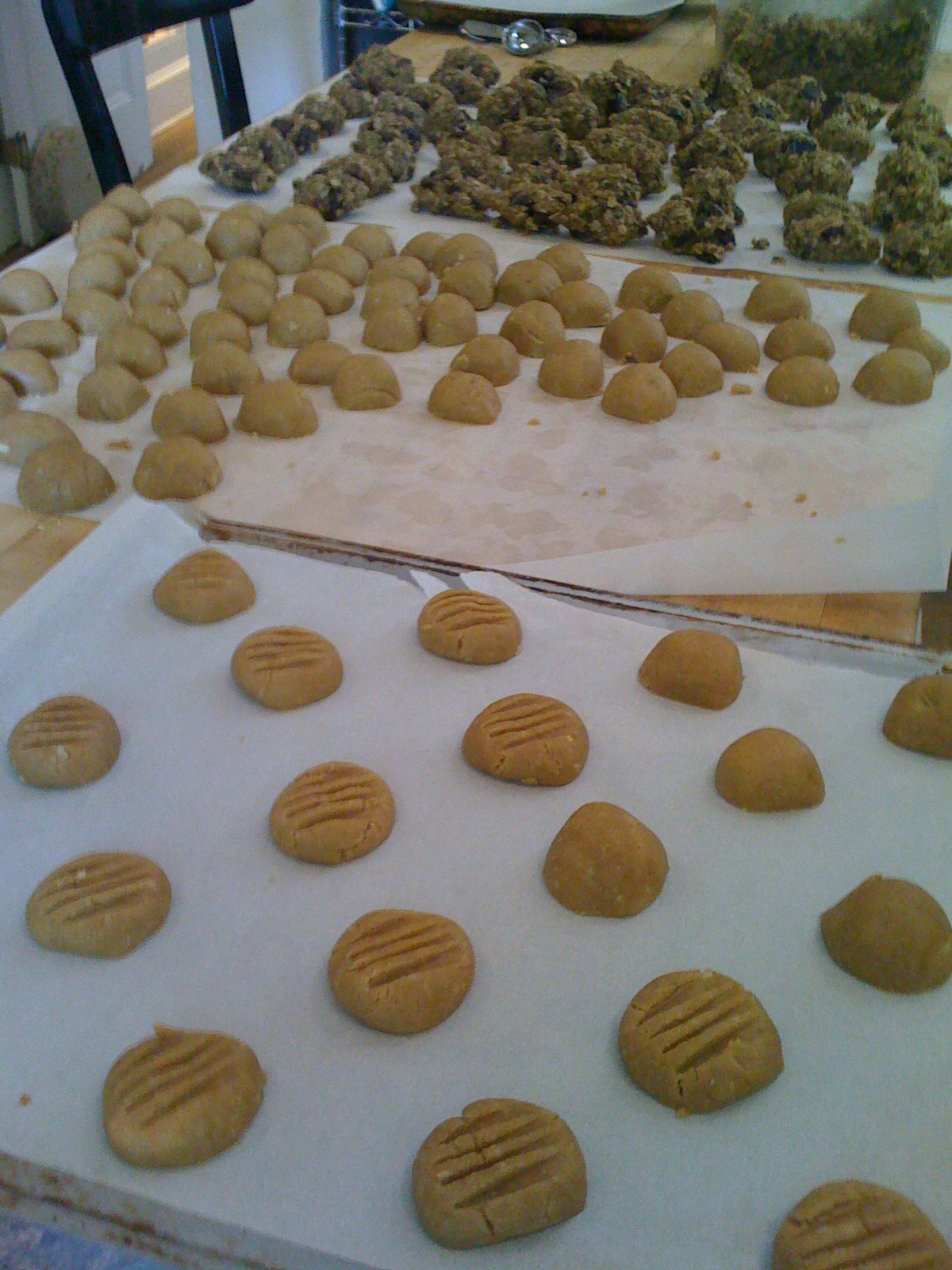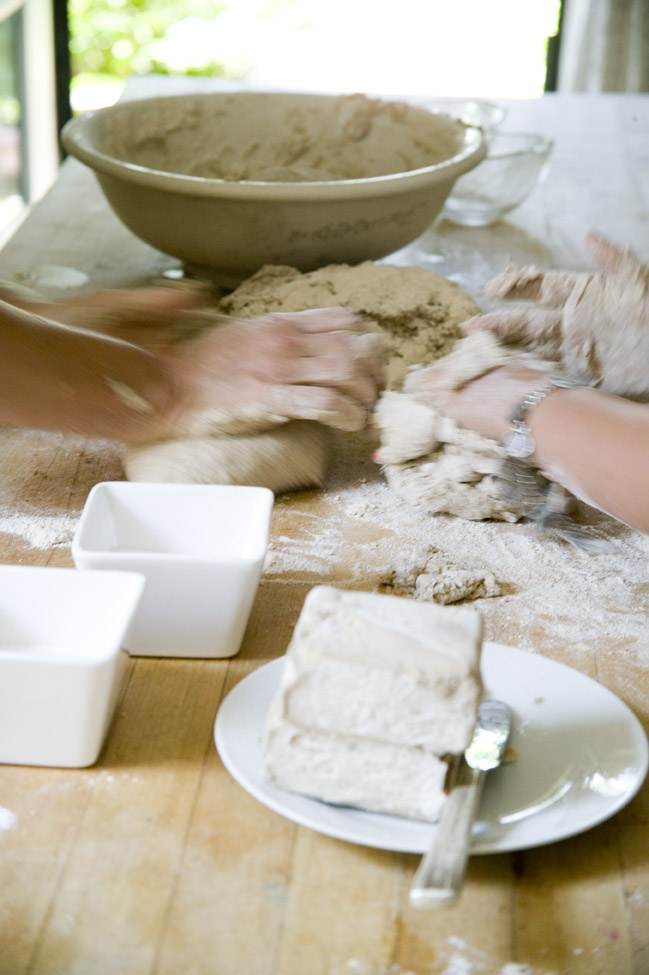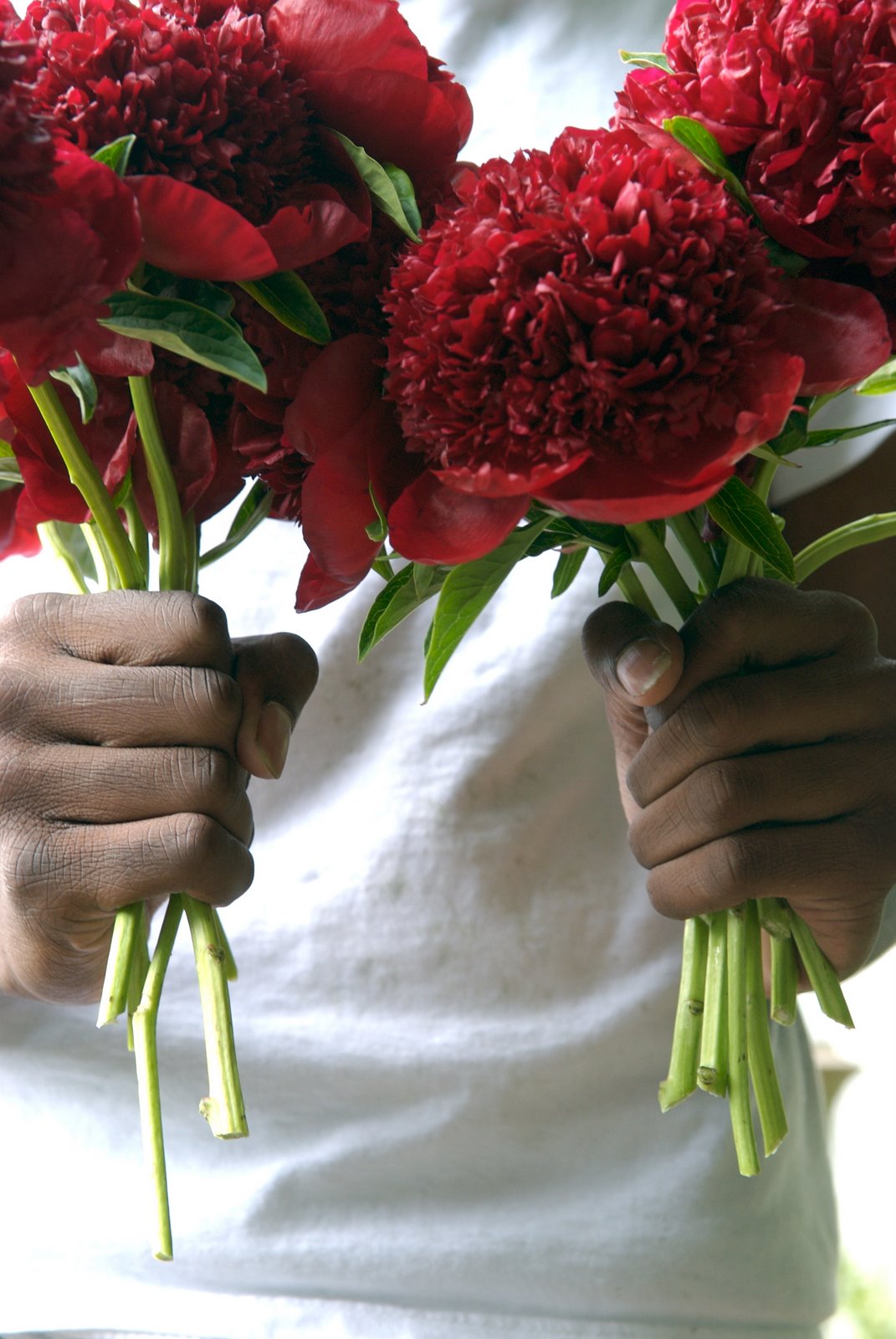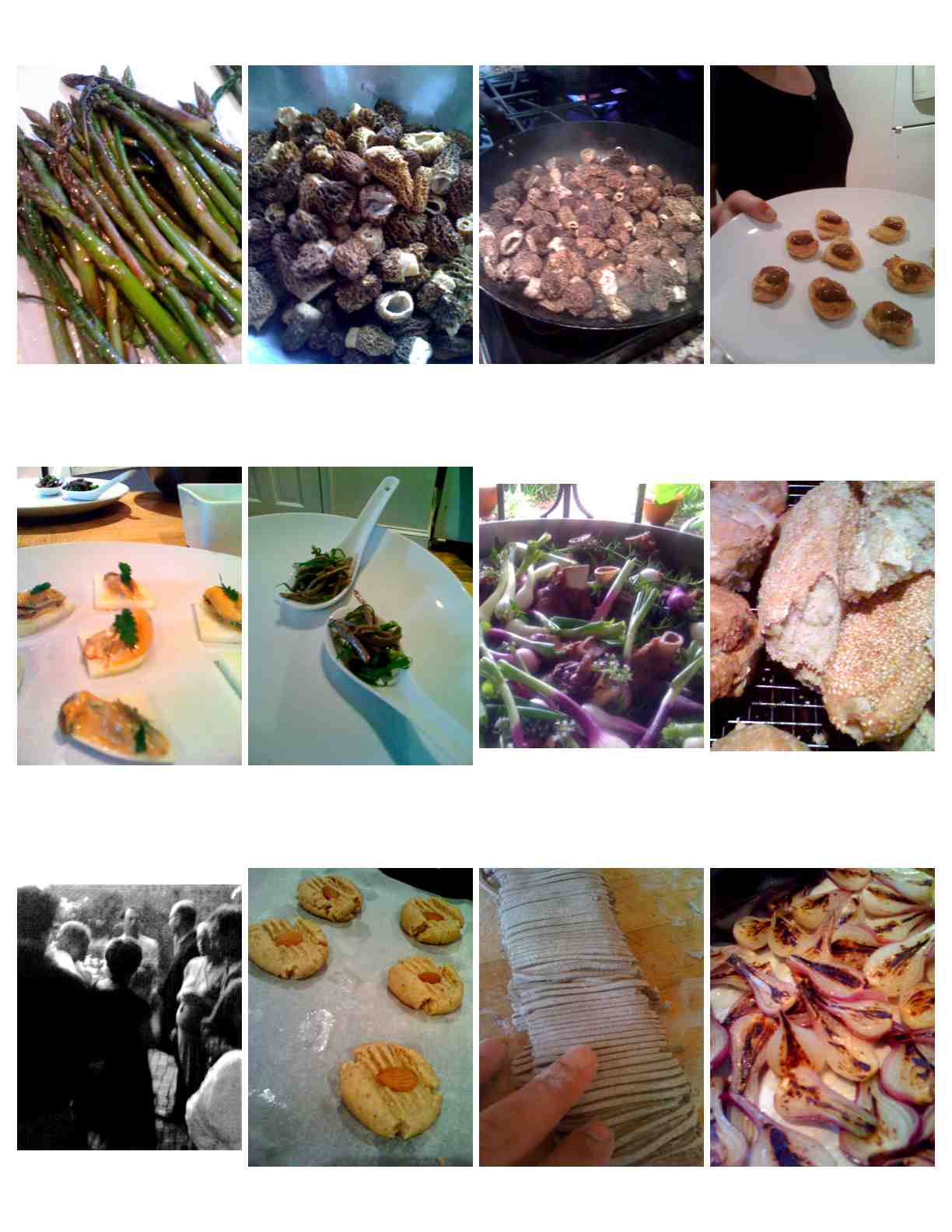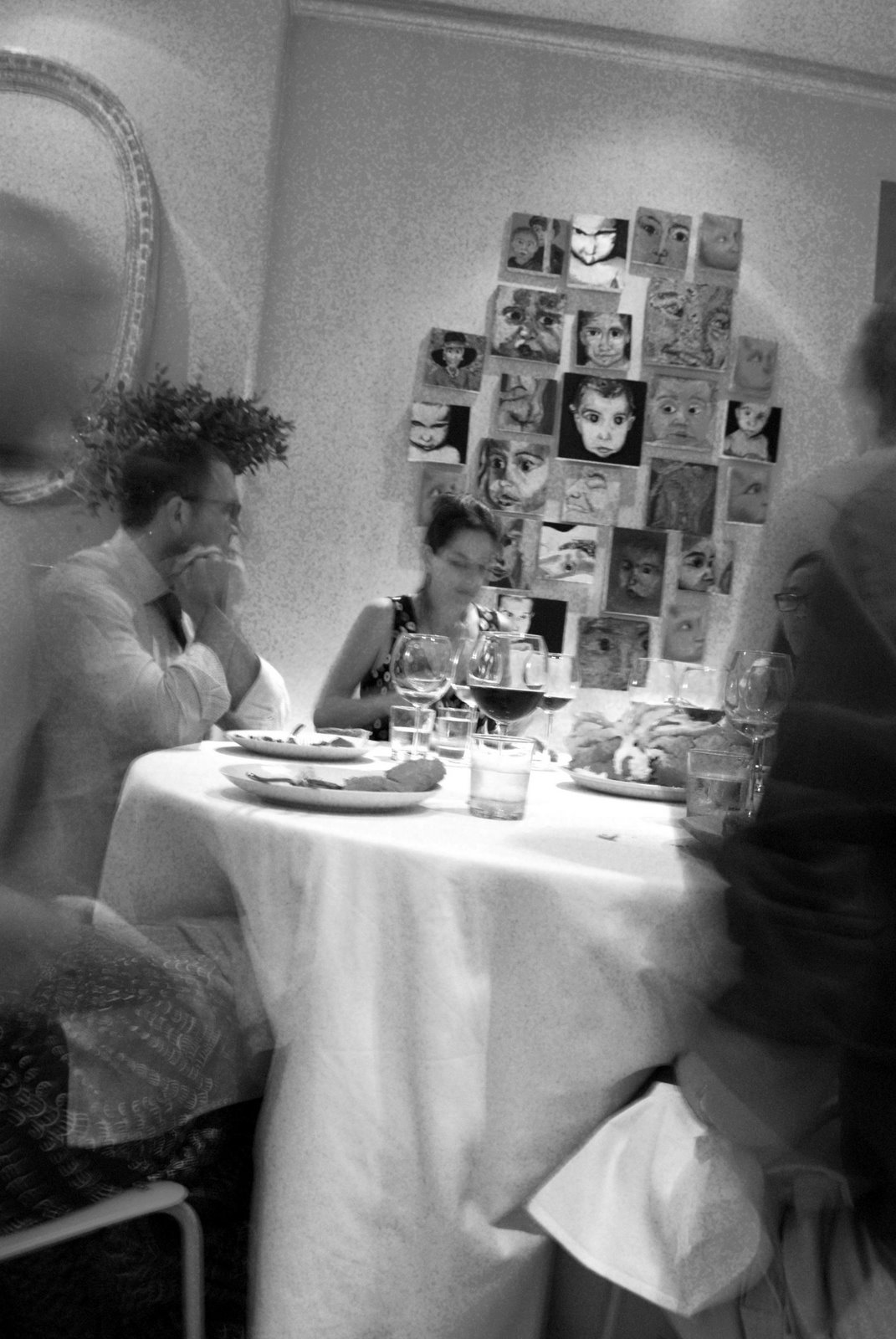 We had another fabulous home restaurant. In addition to the food, wine and music the energy was fantastic, everyone met someone new and conversation was ….
We had another fabulous home restaurant. In addition to the food, wine and music the energy was fantastic, everyone met someone new and conversation was ….
This menu--spring, Wild Salmon, Morels, Lamb, Peas, Cherries…
Dinner Friday June 26, 2009
Passing
Springfield Farm Roasted Lamb with Mint on Cucumber
Toigo Farm Tomatoes and Red Onion on Grilled Onion with Curly Parsley
Toasted Cornmeal and Pea Cake with Caramelized Onion
Lemon Verbena Martini
(Ch. des Valentines) Cotes du Provence ROSE Estate 2007
Seated
Beet Green Soup with Kohlrabi Relish and Basil
Walnut Bread
(Mestre-Michelot) Bourgogne Blanc "Montmeix" 2006
Semolina Noodles with White Morels, Baby Zucchini, Baby Carrots, Red Spring Onion, Borage, Lemon Balm, Bronze Fennel and Summer Savory
Sesame Bread
(Gilbert) Menetou Salon Blanc 2006 (sauv Blanc)
Ivory King Salmon with Sugar Snaps, Baby Leeks, Baby Blue Kale, Potatoes and Lemon Mustard Vinaigrette with Chives and Parsley
Spelt Focaccia
(de Montille) Bourgogne Rouge 2006
Cheese with Cracker and 1508 Greens
Cherry Compote with Cornmeal Crust, Frozen Coconut
(Jacques Lassaigne) 'Les Vignes de Montgueux' Blanc de Blancs Brut NV Lassaigne
Shaved, Frozen Chocolate with First Figs of the Season
Mini Maccha Cake
Small Oatmeal Lavender Cookie
Salty Rosemary Walnut Biscotti
The music was inspired by the work of Herbie Hancock. We began with modal jazz funk and moved to variations of Honky Tonk, where HH is playing I think three different pianos with Miles Davis. Recorded in DC in the 1970’s these sets are an extrapolation of the late sixties work In a Silent Way which we also played… I am a sucker for variations and the inability to repeat anything the same –so I love to play these so called same songs back to back…Honky Tonk lasts for more than an hour when you play all five versions together and they bleed into each other… this and silent way are about as far as I can go with electronic Jazz…they have everything I love about Jazz—improv, spontaneity, syncopation and in these tunes funk… I ended with HH first album Maiden Voyage, classic and also The Piano which is solo work which is nice to end on after everyone is a little drunk and tired… a great night… thank you Herbie!
Cantaloupe Island, Cantaloupe Island, Herbie Hancock
Watermelon Man, Cantaloupe Island, Herbie Hancock
Driftin', Cantaloupe Island, Herbie Hancock
Blind Man, Blind Man, Cantaloupe Island, Herbie Hancock
And What If I Don't, Cantaloupe Island, Herbie Hancock
Maiden Voyage, Cantaloupe Island, Herbie Hancock
Honky Tonk, The Cellar Door Sessions [Disc 5], Miles Davis
Honky Tonk, The Cellar Door Sessions [Live] [Disc 3], Miles Davis
Honky Tonk, The Cellar Door Sessions 1970 [Disc 2], Miles Davis
Honky Tonk, The Cellar Door Sessions 1970 [Disc 4], Miles Davis
Honky Tonk (Live), The Cellar Door Sessions 1970 (Disc 4), Miles Davis
Improvisation #1, The Cellar Door Sessions 1970 [Disc 1], Miles Davis
Improvisation #2, The Cellar Door Sessions 1970, Miles Davis
Improvisation #3, The Cellar Door Sessions 1970 [Disc 4], Miles Davis
Improvisation #4, The Cellar Door Sessions 1970, Miles Davis
In A Silent Way/It's About That Time [LP Version], The Complete In A Silent Way Sessions [Disc 3], Miles Davis
In A Silent Way, The Complete In A Silent Way Sessions [Disc 2], Miles Davis
In A Silent Way (Rehearsal), The Complete In A Silent Way Sessions [Disc 2], Miles Davis
Maiden Voyage, Maiden Voyage, Herbie Hancock
The Eye Of The Hurricane, Maiden Voyage, Herbie Hancock
Little One, Maiden Voyage, Herbie Hancock
Survival Of The Fittest, Maiden Voyage, Herbie Hancock
Dolphin Dance, Maiden Voyage, Herbie Hancock
My Funny Valentine, The Piano, Herbie Hancock
On Green Dolphin Street, The Piano, Herbie Hancock
Someday My Prince Will Come, The Piano, Herbie Hancock
Harvest Time, The Piano, Herbie Hancock
Sonrisa, The Piano, Herbie Hancock
Manhattan Island, The Piano, Herbie Hancock
Blue Otani , The Piano, Herbie Hancock
My Funny Valentine (Take 3), The Piano, Herbie Hancock
On Green Dolphin Street (Take 2), The Piano, Herbie Hancock
Someday My Prince Will Come (Take 3), The Piano, Herbie Hancock
Harvest Time (Take 3), The Piano, Herbie Hancock
